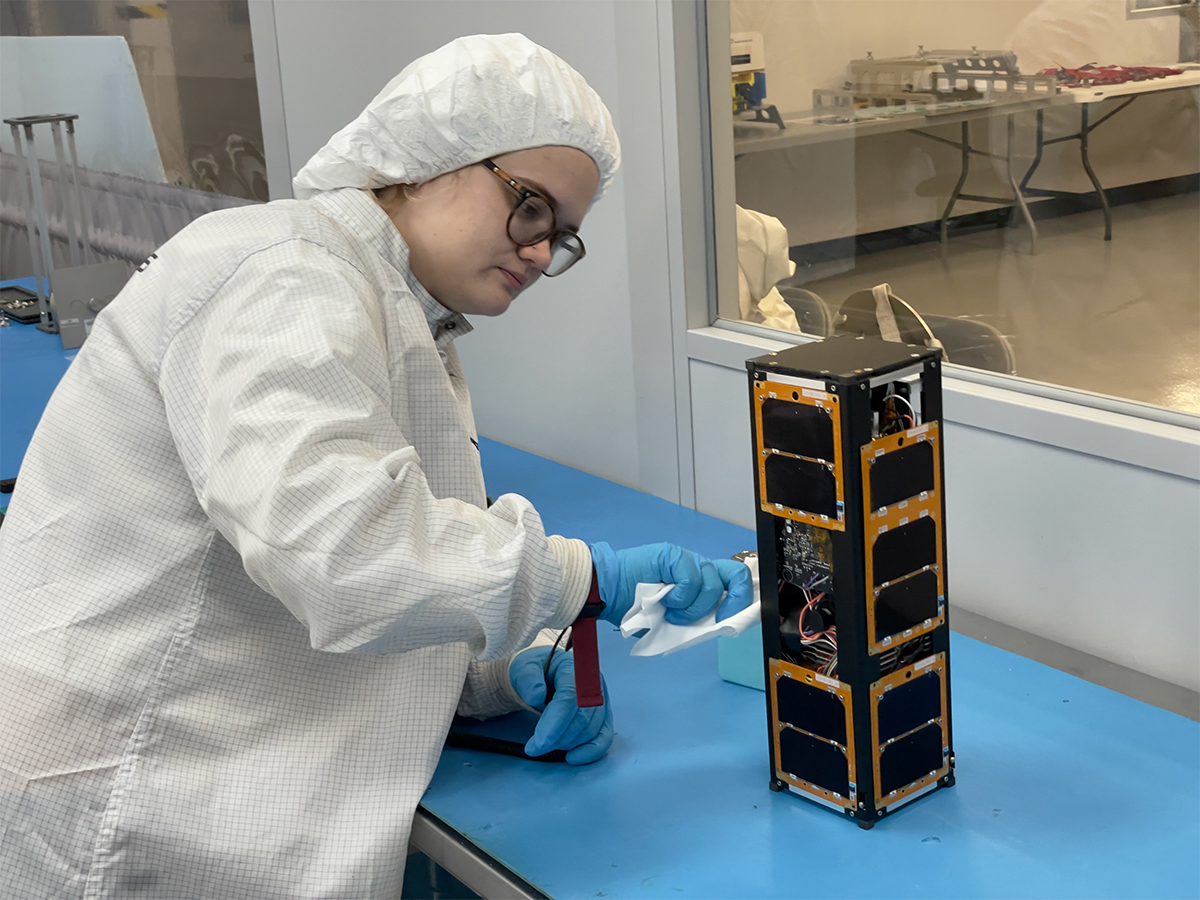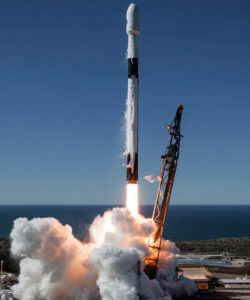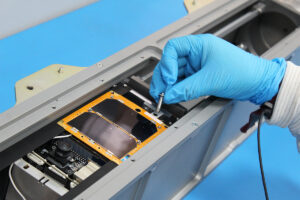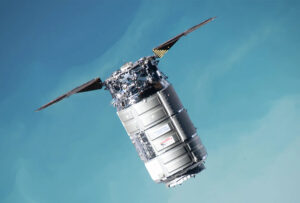“An incredible opportunity:” Student-built cube satellite will be space-bound in August 3 launch
Author: aere_sb1234
Author: aere_sb1234

History is in the making for a student team in the Department of Aerospace Engineering’s Make To Innovate (M:2:I) program.
CySAT-1, a cube satellite (CubeSat) M:2:I project, is set to launch from the Kennedy Space Center on a trip to the International Space Station (ISS) August 3 at 10:28 a.m. It will be part of the NASA Commercial Resupply Mission NG-21. The student-designed and built CubeSat will lift into space as part of NASA’s CubeSat Launch Initiative (CSLI). The project represents a significant milestone for the students, M:2:I and the university.

The project has a long history, initially started many years ago through the Iowa Space Grant Consortium, a NASA-sponsored agency housed in the Department of Aerospace Engineering that provides opportunity and outreach for students who want to be part of NASA programs. Despite initial challenges, CySAT-1 gained momentum after a successful proposal to NASA, which was assisted by an Iowa State alumnus working at the agency. The CySAT-1 project has become part of the university’s M:2:I course, providing students with dedicated time for lab work and meetings with advisors.
Fully built by students: CySAT-1 stands out
“Normally, students don’t get the ability to design, build, and fly space hardware. This was an incredible opportunity,” said faculty advisor Matthew Nelson. While other universities have launched CubeSats, Iowa State’s project stands out significantly for being entirely student-built. “We give students a lot of latitude in deciding their roles. We have teams focusing on specific aspects like avionics and structures, allowing students to choose areas they are most interested in,” Nelson explained.
Many students have contributed to the project and played different vital roles in the success of the satellite. As a student involved with CySat-1 from September 2022 to May 2024, Alexis Locati served one semester as a team member and three as the project manager.

Locati shared that from an engineering standpoint, she primarily worked on the structural design and analysis, AI&T (assembly, integration, and testing), and all associated documentation and logistics involving their stakeholders. From a management perspective, she created detailed schedules and plans for the project and team and ensured members followed the plan.
Over the past year, both Alexis and other students worked hard to redesign components, integrate the science payload, and ensure the satellite met all necessary criteria. With contributions from all members, the team was able to get the satellite to a flight-ready state. “It was an honor for me to be able to be involved with this trip, being the final person to handle CySat-1 before it goes to space after so much hard work. It was a great way to end my semester and a great accomplishment from an educational and professional standpoint,” Locati said.
Payload is part of a master’s degree thesis
CySAT-1 is a milestone for all past and present team members and a personal achievement for Nelson, whose master’s thesis work is the basis for the science payload. Nelson’s thesis addressed filtering out interference while retaining frequency information, allowing the radiometer to function despite some performance degradation. This approach was used as the basis for the payload, providing the calculations and experimental validation needed.

Students initially considered a more complex synthetic aperture radar but opted for the radiometer due to fewer licensing requirements and no need for transmission. The challenge was in miniaturizing the radiometer for a CubeSat, achieved through technological advances and some performance compromises, especially with the antenna. “Knowing that my thesis work will go up there and, if everything works, will be collecting data, is incredibly fulfilling,” Nelson shared.
Recently, the team traveled to Houston, Texas to deliver CySAT-1 for integration with the launch vehicle. Nanoracks, a NASA-contracted company that provides a portal to space for small research payloads designed for satellites, performed final checks to ensure everything was secure and ready for deployment. With all tests passed, CySAT-1 is now ready for final steps to prepare it for space. Once on the ISS, astronauts will deploy the satellite and it will follow the orbit of the ISS until the orbit eventually decays.
Team members and advisors will travel to the Kennedy Space Center for the August 3 launch.